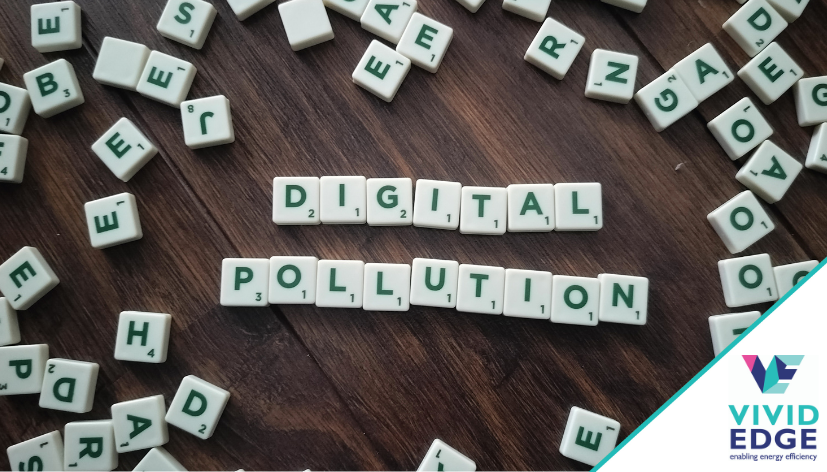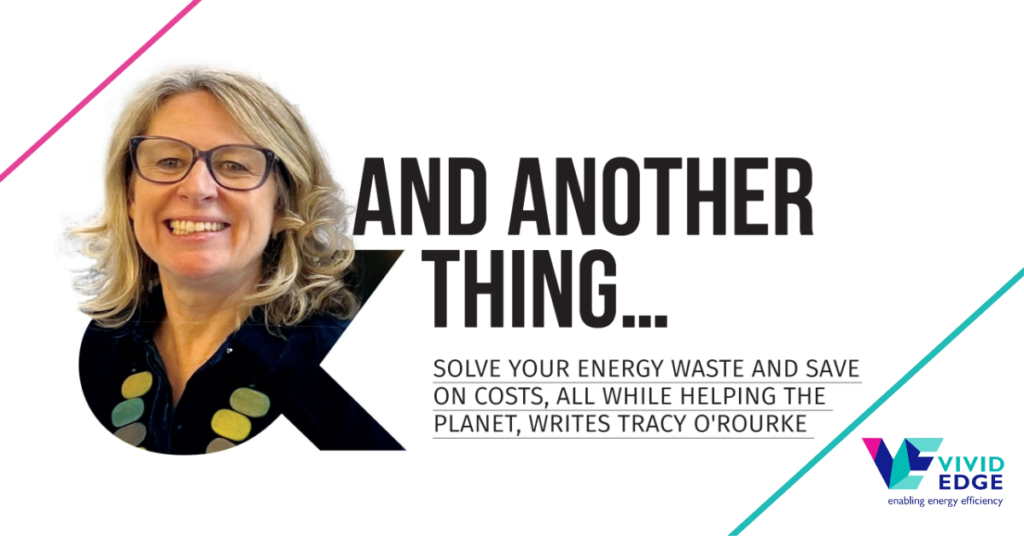3-4 min reading
Green Team
At Vivid Edge, we are advancing our commitment to sustainability and responsible business practices. This year, Vivid Edge has taken a significant stride towards reinforcing our dedication to sustainability by establishing a ‘Green Team’. We want to deepen our commitment to foster a culture of environmental responsibility and social awareness internally.
The Green Team has taken on the responsibility of crafting and distributing a monthly newsletter featuring compelling social and environmental topics. These thought-provoking themes are serving as a catalyst for discussion and action during our weekly coffee mornings, creating a forum for exchanging ideas and deepening our understanding of ESG-related issues. This initiative is a reflection of Vivid Edge’s ethos, where sustainability is not just a part of our business model but the heartbeat of everything we do.
Digital Pollution
The March theme is digital pollution, an often-overlooked counterpart to more visible environmental issues like air pollution and food waste. Digital pollution is a term that encompasses the environmental impact of our digital activities. As a company deeply rooted in social and environmental responsibility, recognising and addressing the impact of digital pollution is important to us.
Understanding Digital Pollution
Digital emissions, resulting from our online activities, have a substantial environmental footprint. If it was a country, it would rank as the fourth most polluting nation worldwide, responsible for approximately 4% of global emissions— double that of the aviation sector.
Key components of digital pollution include:
- manufacturing of technological devices
- data storage and transmission
- everyday digital actions
But how do everyday activities contribute to this footprint?
Here are some examples:
- Unread Emails: Subscribing to newsletters and then either not reading them or immediately deleting them contributes to server energy use.
- Cloud Storage Overuse: Storing large amounts of data in the cloud, such as documents and photos (and maybe double saving them), requires energy-intensive data centres to keep this information accessible and safe.
- Overuse of Digital Services: Constantly using digital assistants, online platforms, and smart home devices adds to the energy consumption of servers running these services.
- Background Data Usage: Apps and software running in the background of your devices can consume data and energy without you actively using them.
Our Journey Towards Digital Sustainability
Inspired by the insights from the Sustainable Life School newsletter, our team has embarked on monthly initiatives aimed at reducing our digital impact. Each team member has picked an individual challenge from the options highlighted in the newsletter. These were:
- Digital Clean-up: The goal is removing unneeded apps and files and unsubscribing from newsletters that no longer serve us.
Tip: Filter by email size and delete the biggest ones first for quick impact. - Small Electronics Clear-Out: recycling old phones, chargers, USB sticks etc. that are no longer in use or beyond repair.
- Switching to Ecosia: Ecosia is an eco-friendly search engine uses the revenue generated from searches to plant trees, supporting reforestation efforts and reducing CO2 emissions.
Our weekly coffee morning session became a platform where we explored the theme of digital sustainability, sharing insights, experiences and ideas for weaving these practices into our daily routines.
Team Efforts and Innovations
Ecosia Exploration: Team members tested Ecosia, sparking interest in its potential to meet both professional and personal needs.
SharePoint Efficiency: A mini tutorial addressed concerns about sharing links instead of attachments, improving our internal communication and file management.
Digital Communication Impact: Discussions revealed the carbon footprint of emails and WhatsApp messages, prompting mindful digital correspondence. It’s lead us to manage our digital interactions more thoughtfully, with an emphasis on efficiency and environmental mindfulness.
- A single WhatsApp message generates approximately 0.2 grams of CO2, which scales up to a staggering 1,380 kg of CO2 per minute when considering global usage rates.
- An average email is weighing in at 0.3g CO2e.
Responsible Waste Management:
- Batteries are collected in the office for recycling.
- Used ink cartridges are returned for disposal.
- Electronic waste is collected in the office and then taken to WEEE collection point.
As we navigate the complexities of the digital age, the importance of being mindful of our digital and environmental footprint cannot be overstated. By adopting a more mindful approach to technology use, we can significantly mitigate digital pollution and contribute to a more sustainable future.
References
For further exploration of digital sustainability, our team discussions were enriched by insights from
and Pawprint,
where you can find more information.



